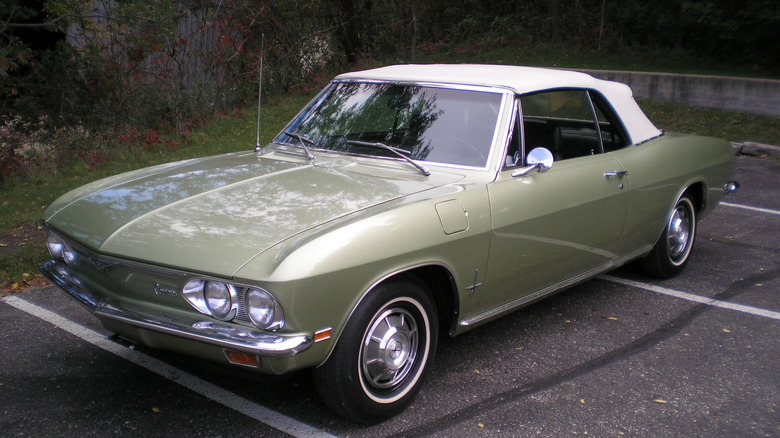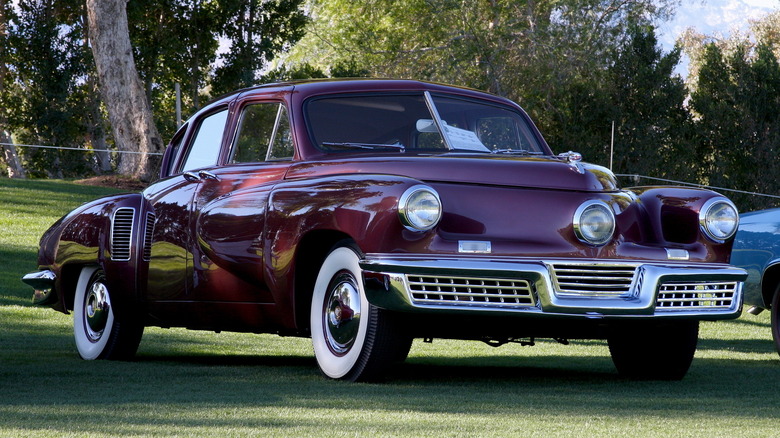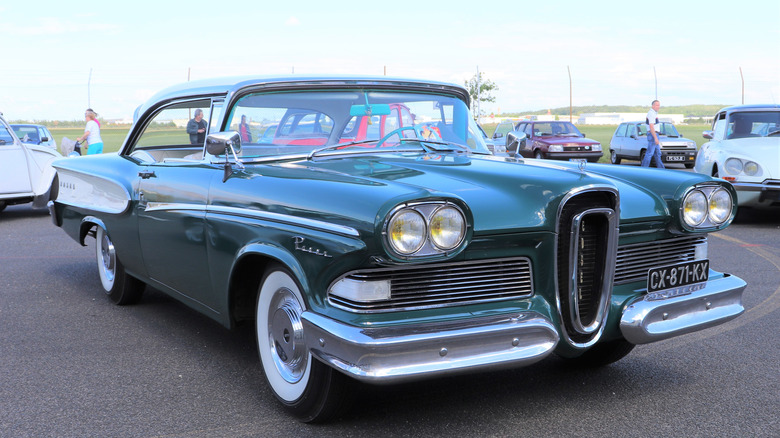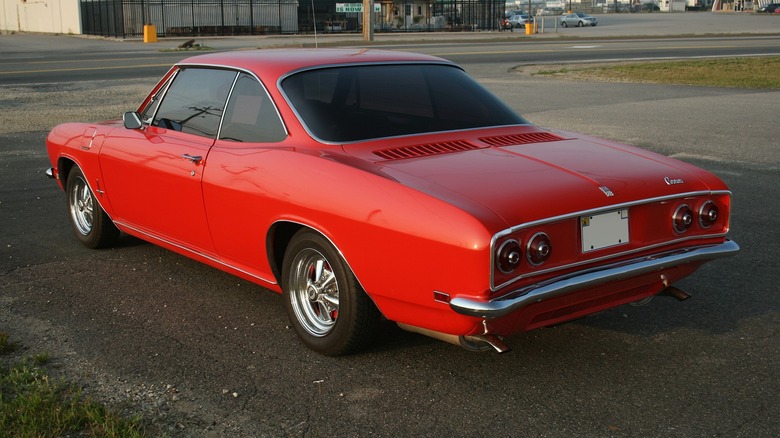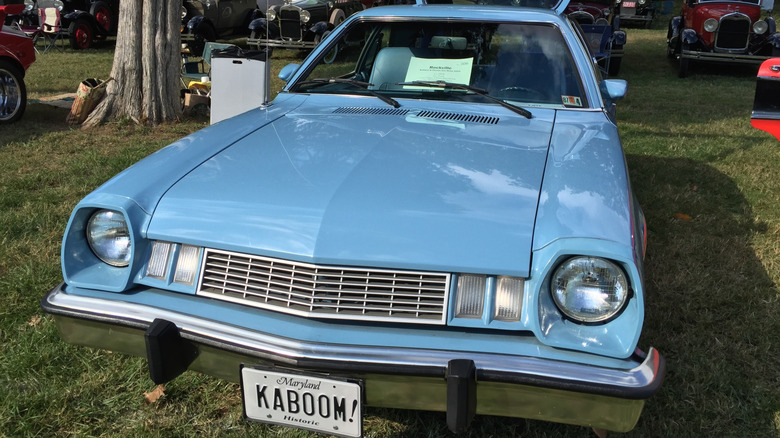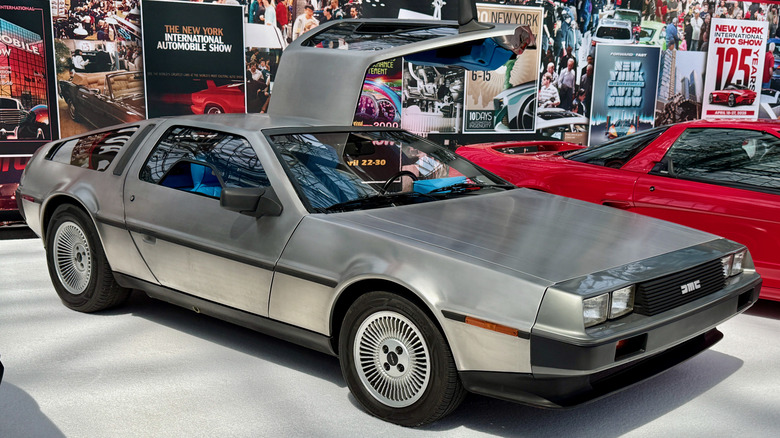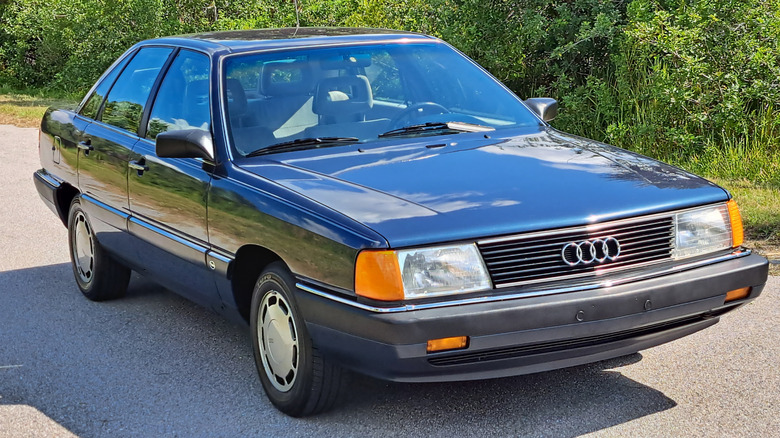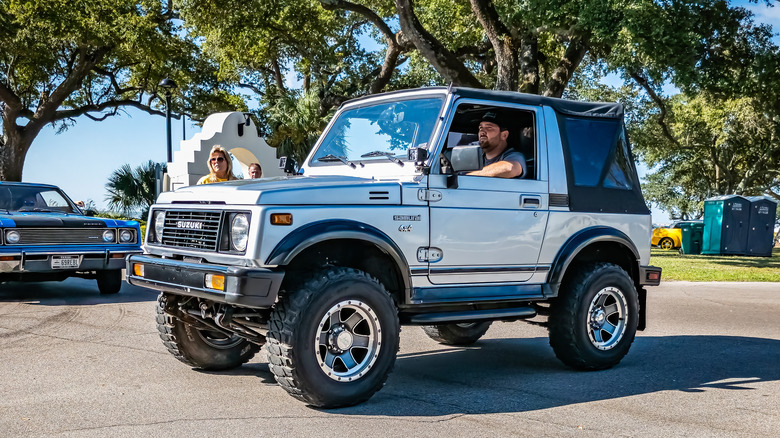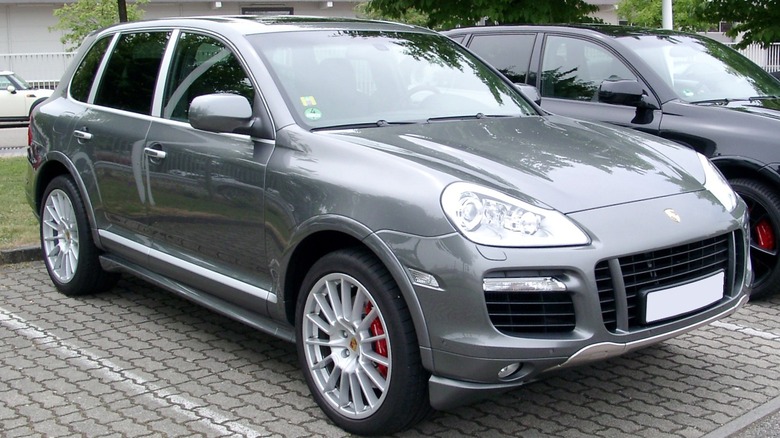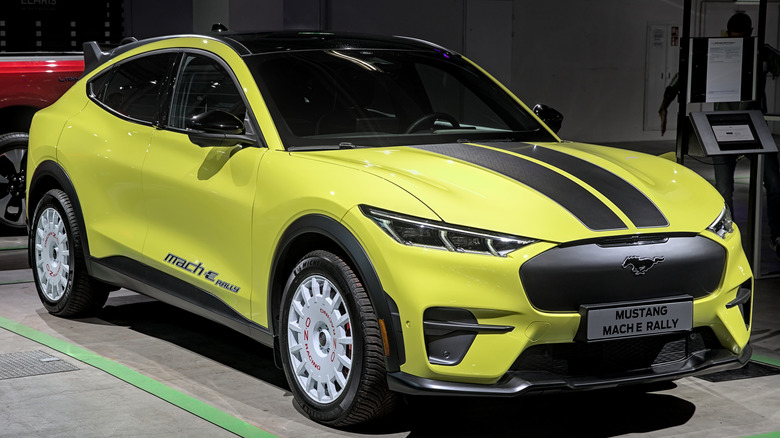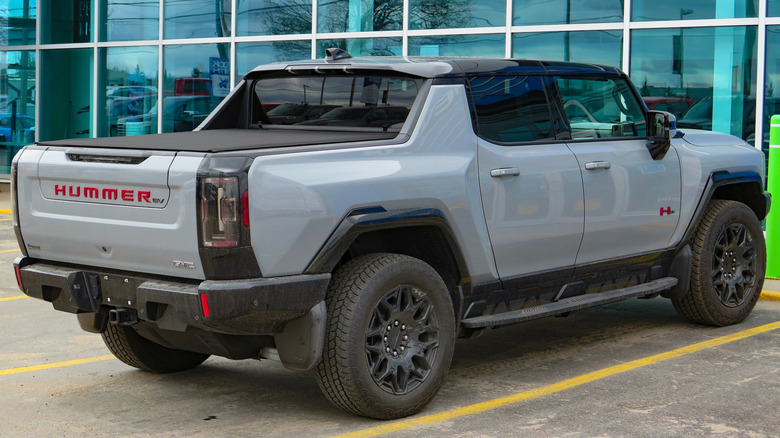10 Of The Most Controversial Cars Ever Made
Our love affair with the automobile has lasted for over a century as our cars and trucks helped us find freedom along ribbons of blacktop stretching from one horizon to the next. However, as with any relationship, there have been rocky patches along the way. Some cars have proven not to be great driving partners, while other automotive relationships turn out to be explosive, occasionally literally so. Sometimes, the creators of these cars become mired in scandal. In other cases, a beloved automaker reveals a side of itself we never expected, and may not like. Yet the relationship between car and driver lingers, despite these controversies.
Some brands have inspired loyalty across generations, so when they release models that disappoint us, they do more than just discourage people from visiting their showrooms. People feel personally let down. Arguably, some of these cars do not deserve bad reputations, yet their notoriety has lasted for decades. Sometimes, the vehicles themselves are fine, but the brands that build them have made such dramatic shifts in their philosophies or model ranges that loyalists cry foul, although with time, people may come to accept the new driving philosophy to the point that the previous controversy is forgotten.
The following list includes all of the preceding phenomena and others. We'll look at some of the most controversial cars ever made, from manufacturers in the United States and abroad, across several decades. These are the models that tested our love for cars and ultimately strengthened it.
Tucker 48 Torpedo
Preston Tucker had a vision for a car that would advance the state of the industry in technology and safety, but fraud charges derailed his dream before it could get up and running. In the end, he built only 51 units of the Tucker 48, often referred to as the Tucker Torpedo. However, while his vision may not have been appreciated in his lifetime, his sleek and innovative sedans have sold for almost $3 million in recent years. The Tucker 48 car's history may be the ultimate automotive story of what might have been.
Preston Tucker's radical new design was a refreshing sight in the post-war years, when other carmakers were building pre-war designs that already looked old when they were new. Preston Tucker's car, by contrast, was almost a complete reimagining of the American automobile. Its sleek and curvy lines looked futuristic in 1948. The engine was in the rear, an unheard-of arrangement for a sedan at the time, and the 48 sported innovative safety features like a pop-out windshield and a padded dash. Famously, it had a center headlight that swiveled to light the way around corners.
While Tucker possessed ambition and innovative ideas in spades, he lacked money. To raise capital, he sold over 1,800 dealership franchises and implemented a controversial accessories program that allowed potential customers to purchase items like radios and seat covers to secure early delivery of their cars. His tactics raised millions, but they triggered an SEC investigation whose report leaked to the press just as Tucker planned to issue stock. Though the $17.45 million stock offering eventually proceeded, Tucker and seven executives were indicted for fraud and conspiracy in 1949. Although they would all be cleared of the charges, the company had gone bankrupt, and the dream died.
Ford's Edsel Brand
Ford's biggest flop in history was the Edsel disaster. Ironically, the Edsel brand was supposed to be Ford's big leap into the future, its first all-new car line in decades, and a clean sheet of paper approach to designing and launching new cars. It was intended to expand Ford's brand strategy, giving the company a nameplate to compete with GM's mid-range brands as well as Dodge and DeSoto. Ford spent millions on committees studying the market, resulting in an attempt to split Edsel's appeal between young, performance-oriented buyers and more sedate middle-aged Buick drivers. In the end, the brand alienated everyone, including loyal Ford drivers.
Even the Edsel name was chosen by a committee from among thousands considered. Edsel was Henry Ford's son's name, but the public was puzzled by it at best. It certainly didn't conjure performance, adventure, modernity, or sexiness. The committee approach was slow, too, taking 10 years to bring Edsel cars to market. In that time, the buzz had shifted from mid-priced cars to compact models like the Volkswagen Beetle and the first-generation Pontiac Tempest. Ford, which had sunk at least $250 million into the Edsel brand, was caught flat-footed.
Was the Edsel a bad car? Well, aside from its controversial grille that made it look like it had just sucked a lemon, it wasn't terrible, but it was strange. For instance, the push-button transmission was located in the steering wheel hub, leading drivers to shift when they meant to hit the horn, often with disastrous consequences. Combined with a confusing price structure and a recession that hit all auto sales in 1958, the Edsel brand didn't stand a chance. Edsels were sold for only three model years, from 1958 through 1960, before Ford pulled the plug.
Chevrolet Corvair
The Chevy Corvair was a rear-engine, lightweight sports coupe that was unlike any other American car of its time. Unfortunately, thanks to its starring role in Ralph Nader's book "Unsafe at Any Speed," it now carries one of the worst reputations of any car ever built. Yet the Corvair's bad reputation may not be deserved. One of the Chevy Corvair's biggest problems was its lack of an anti-roll bar, leading Nader to charge that the car was prone to rolling over during abrupt handling. Yet a study by the U.S. government in the early 1970s vindicated the Corvair, finding that its rollover rate was similar to that of other lightweight cars of its era.
Nevertheless, the damage to the Corvair's image had been done and then multiplied when it came out that GM had used private detectives to dig up dirt on Nader. It's a shame, because the Corvair was an extraordinary car by the standards of the American auto industry in the 1960s. A test driver for Hagerty Media found that under certain circumstances, if the car's tires weren't properly inflated, it could conceivably roll, but overall, he found the car so enjoyable to drive that he finished his review by stating his intent to buy one: "As for my experience behind the wheel? I'm shopping." He also pointed out that the second-generation Corvair sported a redesigned suspension, so Nader's criticism of the Corvair may have already been outdated by the time it was published.
Still, the Corvair sold over 1.8 million units during its decade-long run, including coupe, convertible, wagon, van, and pickup variants. Today, Corvairs in decent condition are surprisingly affordable, with the convertible models topping out at $25,000 and most other models going for less.
Ford Pinto
Possibly even more than the Corvair, the Ford Pinto became the poster car for safety issues due to its alleged tendency to burst into flames in rear-end collisions. This gained it a reputation as one of the worst Ford models ever made. Yet just as with the Corvair, the reality may not be as grim as the legend. However, given the car's deadly image in the public's imagination, it's a safe bet that the Pinto name will never be resurrected by Ford.
At first, the Pinto seemed to be a perfectly timed model for Ford. The carmaker introduced the compact Pinto in sedan and hatchback body styles in 1971, and added a two-door wagon the following year. In 1973, the OPEC oil embargo targeted the United States, leading to the first great oil shock and sky-high gas prices. Consequently, Ford sold over half a million of the small, fuel-sipping Pintos in 1974. But then reports of fiery fatal crashes began to circulate, and sales dropped by half the next year. The problem lay in the gas tank's position just aft of the rear axle, which caused the tank to hit the differential and rupture in a rear-end collision.
The fallout grew worse because Ford was rumored to have rejected possible preventive measures to save time and money during the Pinto's rushed development. The company paid out millions to settle lawsuits. Yet despite the controversy, a study by the National Highway Traffic Safety Administration (NHTSA) found that the Pinto had an overall fatality rate comparable to other compact cars of its period. However, the fiery crashes understandably frightened the public, and the word Pinto remains a byword for negligent safety failures in automotive design.
DeLorean DMC-12
"Back to the Future's" 1981 DeLorean DMC 12 helped to rehabilitate the DeLorean's reputation, but the company that built the car collapsed under scandal when its founder was charged with trafficking drugs and other offenses. The car itself has generated controversy over the decades. Initial reviews were good; For instance, Car & Driver stated, "...our first impressions are overwhelmingly positive." But over time, many reviewers' opinions changed, seeing the car as poorly built, unreliable, and too slow. Present-day enthusiasm for the car is driven largely by nostalgia rather than appreciation for its engineering.
John Z. DeLorean intended his vehicle to be an "ethical sports car," which is ironic considering how his company collapsed into a cocaine-dusted scandal. But his plans were good. From its corrosion-proof stainless steel body panels to planned safety innovations like airbags, the DMC-12 was meant to be the next step in the evolution of the automobile. The car was assembled in Northern Ireland, providing much-needed jobs for the troubled region. However, slightly more than 9,000 DMC-12s were ultimately built, leaving the DeLorean Motor Company desperate for cash.
This is where the story of the company and its founder unravels. Mounting debt, failed appeals for bailouts from the British government, and wonky accounting led to bankruptcy. Then John DeLorean was arrested for cocaine trafficking in what appeared to be a desperate fundraising scheme, although he was later acquitted by claiming an entrapment defense. Furthermore, $17 million, which should have been paid to Lotus for subcontracting work, instead mysteriously vanished, leading to fraud and racketeering charges against DeLorean in 1985. He beat this rap, too, but his bankrupt company was long past any chance at revival.
Audi 5000
Among massive car scandals that rocked the industry, perhaps one of the most unjustified cases of defamation involved the Audi 5000. This car rode the wave of enthusiasm for German luxury sports sedans in the 1980s, and it was a very worthy, all-wheel drive offering. Then everything went sideways when drivers complained about sudden acceleration syndrome. A "60 Minutes" segment brought widespread public attention to the allegations. Despite Audi hiring race driver Bobby Unser to demonstrate that the 5000's brakes could stop the car even with the throttle wide open, the public was spooked. Sales collapsed from 74,000 to 12,000 units.
Before the scandal, the Audi 5000 generated rave reviews. A Car & Driver review of the 1984 5000S Turbo model called it a "top speed star" and noted that it was at home on twisty roads and high-speed autobahns alike. But then came the "60 Minutes" segment in 1986, with multiple drivers claiming their Audis had accelerated out of control while they frantically stood on the brake pedals. "60 Minutes" stacked the deck by connecting a compressed air canister to the transmission of a 5000 to make the car shift into gear on its own.
The NHTSA spent years studying the issue before reaching the same conclusion that many Audi enthusiasts had reached immediately: pedal misapplication. American drivers who were used to widely-spaced pedals and large brake pedals were mistakenly stepping on the accelerator rather than the brakes, since both were much smaller and closer together in Audis than in most American cars. Yet the controversy caused Audi to change the 5000's name to the 100 and 200, and sales took 15 years to recover. Most cars today require the driver to step on the brake before shifting into gear, another legacy of the scandal.
Suzuki Samurai
Suzuki was once better known in the States for building motorcycles. Yet in the mid-1980s, an SUV called the Suzuki Samurai became popular in the 4x4 community, scoring a home run for the Japanese company. But in 1988, it all went bad when Consumer Reports claimed the Samurai was exceptionally prone to rollover crashes. Thus, like the Audi 5000, the Samurai became another imported vehicle to have its reputation destroyed by the American media. There's an excellent argument to be made that this car scandal was exaggerated or made up, much like the Audi 5000 scandal.
Suzuki rebadged its Japan-domestic-market Jimny as the Samurai and brought it to the U.S. as its first four-wheeled vehicle in America, launching it as a 1986 model. This tiny two-door 4x4 was powered by a non-fuel-injected 63-horsepower engine that was glacially slow to accelerate on the highway, but a ton of fun off-road. By the time the scandal broke, Suzuki was selling almost 100,000 Samurai per year. Then Consumer Reports claimed the Samurai was prone to rollovers and gave it an unacceptable rating. Sales plummeted.
Suzuki fought back, claiming that the test was rigged to make the little SUV more likely to roll over. Later that year, the NHTSA and some of its international counterparts vindicated Suzuki, agreeing that Consumer Reports' testing procedures were flawed. Yet in 1996, the magazine reiterated its claims, leading Suzuki to sue. In 2004, the lawsuit was finally settled, with neither side admitting guilt and no financial settlement being reached.
Porsche Cayenne
A generation of drivers has grown up with no memory of a time when Porsche did not sell SUVs, but when the Cayenne debuted in 2003, Porsche purists were horrified. Yet despite the controversy, it took Porsche less than two decades to reach the million mark in Cayenne sales, so the public adjusted to the idea of a big, four-door, four-wheel drive Porsche faster than some might have predicted. Some observers argue that the Cayenne saved Porsche from bankruptcy, while others argue that the Boxster roadster was Porsche's savior, so even in its success, the Cayenne generates controversy.
Prior to its launch in the 2003 model year, Porsche purists decried the idea of a Porsche SUV, claiming that the company's mission was to build lightweight, great-handling, and very fast sports cars. Yet the resulting product proved to handle like no other SUV the world had ever seen. It was blisteringly fast, too, especially when equipped with the 450-horsepower, turbocharged version of its 4.5-liter V8. Drivers were won over, and the Cayenne became Porsche's best seller in short order.
Even then, some reviewers questioned why Porsche chose to give the Cayenne some serious off-road chops. With 10 inches of ground clearance and a 22-inch fording depth, the Cayenne was capable of going where almost no sane Porsche owner would want to take their extremely expensive SUV. Critics argued that it could have been lighter and even faster if it had stuck to on-road driving. But Porsche has always been about engineering the best vehicles possible, and it brought that philosophy to its SUVs. Today, high-end manufacturers from Jaguar to Bentley make SUVs, following a path that Porsche blazed for them.
Mustang Mach-E
The Mustang Mach-E may be a fine electric SUV, but why does it wear the Mustang badge? The legendary name has always graced sports cars like Steve McQueen's 1968 Bullitt Mustang. Would Lt. Frank Bullitt have driven an SUV, and an electric one at that? Furthermore, in an interview with Autocar magazine, Ford's CEO Jim Farley said, "We will never build a Mustang that isn't a Mustang ... For instance, there will never be room for a small, two-row Ford SUV with a Mustang badge stuck on it." So, what is the Mustang name doing on the Mach-E? People had questions, and Ford's executives felt the need to answer.
Calling the Mach-E a Mustang wasn't the original plan, but it evolved during development. Initially conceived as a front-wheel-drive EV based on the Fusion sedan in order to help Ford meet emissions regulations, the project dramatically shifted direction in 2017. The design team pivoted from creating a Mustang-inspired vehicle to treating it as a genuine Mustang. They redesigned it with rear-wheel drive architecture with the option for all-wheel drive via a front motor, and they brought in Mustang handling experts to help with chassis development.
The transformation required won over skeptical insiders. By late 2018, after significant engineering refinements, previously skeptical executives endorsed it as a legitimate addition to the Mustang family, the first in over half a century. Ford reported thousands of pre-orders immediately following the unveiling, so the strategy of associating the vehicle with the Mustang name seemed to work, at least for some drivers.
GMC Hummer EV
Some see EVs as a way to save the planet from the emissions generated by internal combustion engines. But when an EV is enormous, generates 1,000 horsepower, and weighs over 9,000 pounds, critics say it's missing the point. Furthermore, giving the SUV the name of GM's former Hummer division almost seemed guaranteed to court controversy. The original Hummer brand, bought by GM in 1999 and shut down in 2010, generated plenty of contention in its own right. People decried its vehicles as symbols of wretched excess, and environmentalists were so outraged that several Hummer dealerships were firebombed.
The GMC Hummer won't do anything to dispel charges of wretched excess. Despite weighing almost five tons, its 0-60 time is a jaw-dropping 3.3 seconds, thanks to its massive electric-motor power and torque. Advocates for road safety are dismayed. Environmentalists point out that its enormous batteries require so much electricity that they produce more emissions than many gasoline-powered cars. Washington, D.C., has introduced new surcharges on heavy vehicles like the Hummer to make up for the extra wear and tear on roads. Yet 90,000 people put down deposits to buy the Hummer when it was announced, so clearly there is a market for excess.
